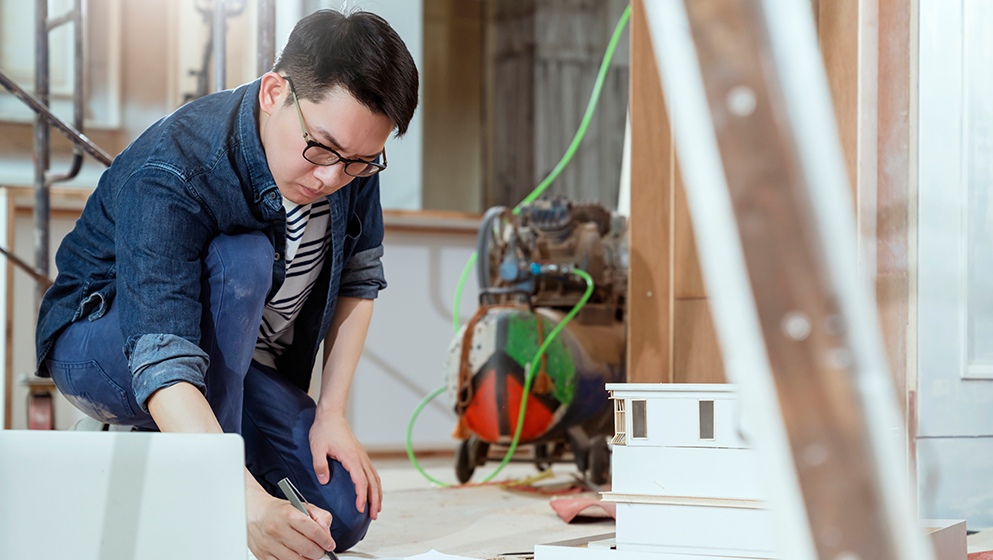This article aims to provide a comprehensive checklist for sellers on how to prepare for a home inspection. The checklist encompasses a range of tasks that sellers should undertake in order to ensure their home is in optimal condition and properly presented for inspection.
The checklist begins with the importance of cleaning and decluttering the home to create a visually appealingand organized space.
It then emphasizes the need to check for any structural issues that could potentially affect the outcome of the inspection.
Furthermore, the checklist emphasizes the completion of necessary repairs and maintenance to address any existing issues.
Another crucial aspect is organizing important documents and information related to the property, which facilitates the inspection process.
Lastly, the checklist stresses the significance of making the home presentable and accessible for the inspector.
By adhering to this checklist, sellers can enhance their chances of a successful home inspection and potentially expedite the sale process.
Clean and Declutter Your Home
Cleaning and decluttering your home is an essential step in preparing for a home inspection. This ensures that potential buyers are able to thoroughly assess the property without any distractions or hindrances.
Home staging plays a crucial role in creating a favorable impression on potential buyers. Begin by removing any personal items such as photographs and excessive decorations that could make it difficult for buyers to envision themselves living in the space.
Additionally, decluttering your home helps create a sense of spaciousness and tidiness, making it easier for buyers to navigate through the rooms.
Deep cleaning is another important aspect of preparing for a home inspection. Pay special attention to areas that are often overlooked, such as baseboards, windowsills, and light fixtures. Thoroughly clean the kitchen and bathrooms, ensuring that all surfaces are spotless and free from any stains or grime.
Carpets should be vacuumed and steam-cleaned if necessary, while hardwood floors should be polished to a shine.
By taking the time to clean and declutter your home, you are not only presenting a visually appealing space to potential buyers but also showing that you have taken good care of the property. This attention to detail can help instill confidence in buyers and make them more likely to consider your home.
After completing the cleaning and decluttering process, it is important to check for any structural issues that may need attention, ensuring that your home is in the best possible condition for the upcoming inspection.
Check for Any Structural Issues
To ensure a thorough evaluation, it is essential to meticulously examine the property for any potential structural flaws. One of the key aspects of this examination is assessing the foundation. Start by checking for any visible cracks or signs of shifting. Look for uneven floors, as they could indicate problems with the foundation. Additionally, inspect the walls for any cracks or bulges, as these can be indicators of structural issues. Pay close attention to any areas where the walls meet the ceiling or the floor, as these are common areas for cracks to appear.
If you come across any structural issues during the inspection, it is crucial to address them before the home inspection takes place. Hire a professional to assess the severity of the problem and provide recommendations for repairs. Taking care of these issues beforehand will not only help you avoid potential negotiation problems with the buyer but also ensure the safety and integrity of the property.
Transitioning into the subsequent section about completing necessary repairs and maintenance, it is important to note that addressing structural issues is just one step in preparing for a home inspection.
Complete Necessary Repairs and Maintenance
In order to prepare for a home inspection, it is important for sellers to address any leaks and malfunctions within the property. This includes fixing any plumbing leaks, electrical malfunctions, or HVAC issues.
Additionally, sellers should also assess and repair or replace any damaged items in the home, such as broken windows, damaged flooring, or faulty appliances.
By completing these necessary repairs and maintenance tasks, sellers can ensure that the home is in good condition and ready for inspection.
Fix Leaks and Malfunctions
Repairing any leaks or malfunctions throughout the home is essential in ensuring a thorough and successful home inspection. It is imperative to identify plumbing issues such as dripping faucets, leaking pipes, or running toilets. These problems not only indicate potential water damage but can also lead to increased water bills.
Additionally, addressing electrical problems is crucial. Inspectors will check for faulty wiring, overloaded circuits, or malfunctioning outlets. These issues can pose a significant safety hazard and should be rectified promptly.
To fix leaks, consider replacing worn-out seals, tightening connections, or repairing damaged pipes. For electrical problems, consult a licensed electrician to diagnose and resolve any issues.
By proactively fixing leaks and malfunctions, sellers demonstrate their commitment to maintaining the property and ensuring its value. This sets the stage for the subsequent section on repairing or replacing damaged items.
Repair or Replace Damaged Items
One crucial step in ensuring a successful home inspection involves assessing the condition of damaged items and determining whether they need repair or replacement. It is important to thoroughly inspect the property and identify any items that are damaged, such as flooring or electrical systems.
If the flooring is worn out or damaged, it may be necessary to replace it to enhance the overall appearance of the home. Similarly, if there are any electrical malfunctions or outdated systems, it is essential to repair them to ensure safety and compliance with regulations. Hiring professionals to handle these repairs or replacements is recommended to ensure quality workmanship.
By addressing these damaged items, sellers can improve the overall condition of the home and increase its value. Moving forward, it is important for sellers to organize important documents and information to facilitate a smooth home inspection process.
Organize Important Documents and Information
To ensure a smooth home inspection process, sellers should meticulously arrange and compile all essential documents and pertinent information related to the property. This step involves gathering necessary paperwork and creating a digital inventory of all relevant documents.
Sellers should gather documents such as the property deed, previous inspection reports, warranties, permits, and receipts for any repairs or upgrades. It is important to organize these documents in a systematic and easily accessible manner so that they can be readily provided to the home inspector.
Additionally, creating a digital inventory of the property is beneficial as it allows for easy sharing and reference. This can be done by taking photographs or videos of each room, highlighting any specific features or improvements. Sellers should also make note of any maintenance or repairs that have been done.
By organizing important documents and creating a comprehensive digital inventory, sellers can provide the necessary information to the home inspector and facilitate a smooth inspection process. This will help potential buyers gain confidence in the property’s condition and ultimately aid in the selling process.
In the subsequent section, we will discuss how to make your home presentable and accessible to the inspector.
Make Your Home Presentable and Accessible
Ensuring that your property is well-maintained and easily accessible for the home inspector can create a positive first impression and instill confidence in potential buyers. One important aspect of preparing for a home inspection is to improve curb appeal. This involves enhancing the exterior appearance of your home to make it more visually appealing. Start by tidying up the front yard, mowing the lawn, and trimming any overgrown bushes or trees. Consider adding colorful plants and flowers to create a welcoming atmosphere.
Additionally, it is crucial to make your home easily accessible for the home inspector. Clear pathways and remove any obstacles that may hinder the inspector’s ability to inspect various areas of the property. Ensure that all doors, windows, and gates can be easily opened and closed. Moreover, provide access to important areas such as the attic, basement, and crawl spaces by removing any obstacles blocking the way.
By focusing on improving curb appeal and creating a welcoming atmosphere, you can make a positive first impression on potential buyers and instill confidence in the home inspection process. Taking these steps will demonstrate your commitment to maintaining your property and increase the likelihood of a successful inspection.
Conclusion
In conclusion, preparing for a home inspection as a seller requires thorough attention to detail, informative actions, and practical steps. By cleaning and decluttering your home, you create a visually appealing environment for potential buyers. Checking for any structural issues ensures the safety and stability of the property.
Completing necessary repairs and maintenance shows that you have taken good care of your home. Organizing important documents and information allows for a smooth inspection process.
Lastly, making your home presentable and accessible enhances the overall experience for buyers.





